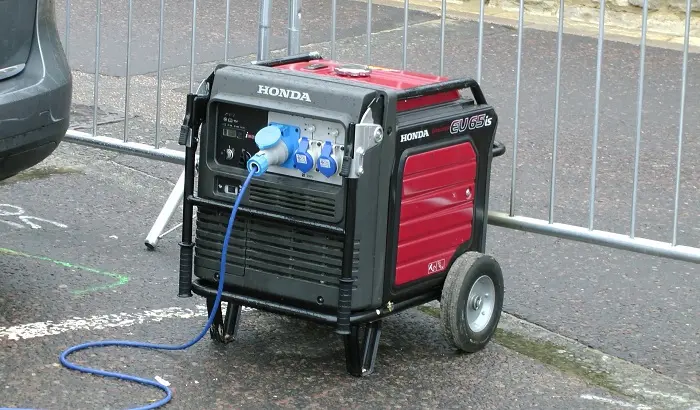A 4000-watt generator is a versatile and powerful tool that can provide electricity for various applications, both in emergencies and for everyday use. Understanding what you can run off such a generator is essential for efficient power management and ensuring you have the right equipment for your needs. This article will explore the capabilities of a 4000-watt generator, what appliances it can support, and tips for optimal usage.
Generators have become indispensable for homeowners, contractors, and outdoor enthusiasts alike. A 4000-watt generator strikes a balance between portability and power, making it suitable for a range of applications, from home backup power during outages to providing electricity at job sites and recreational activities. Knowing what you can run off a 4000-watt generator will help you maximize its potential.
Understanding Generator Power Ratings
Watts and Running Power
The wattage rating of a generator indicates how much electrical power it can provide. A 4000-watt generator typically has two types of wattage:
Running Watts: This is the amount of power the generator can supply continuously.
Starting Watts: Some appliances require more power to start than to run. This is referred to as starting watts or surge watts.
Importance of Knowing Your Needs
Before determining what you can run off your generator, you need to know the wattage requirements of the appliances you wish to power. Calculating the total wattage will help you avoid overloading the generator.
What Appliances Can a 4000 Watt Generator Run?
Essential Home Appliances
Refrigerator:
Average running wattage: 200-800 watts
Starting wattage: 800-1200 watts
A 4000-watt generator can typically handle a standard refrigerator, keeping your food safe during a power outage.
Lights:
Average running wattage: 60-100 watts per bulb
Depending on the number of bulbs, a 4000-watt generator can power multiple lights throughout your home.
Sump Pump:
Average running wattage: 500-800 watts
Essential for preventing basement flooding, a sump pump can run efficiently on a 4000-watt generator.
Television:
Average running wattage: 100-400 watts
You can easily power a television, allowing you to stay informed and entertained during outages.
Microwave Oven:
Average running wattage: 600-1200 watts
A microwave may require starting wattage, so check your specific model to ensure compatibility.
Heating and Cooling Devices
Space Heaters:
Average running wattage: 750-1500 watts
You can run a small space heater, but larger models may exceed the generator’s capacity.
Fans:
Average running wattage: 75-100 watts
Fans are an excellent option for cooling down your space without overloading the generator.
Tools and Equipment
Power Tools:
Average running wattage: 500-1500 watts (varies by tool)
Tools like drills, saws, and sanders can run on a 4000-watt generator, making it ideal for job sites.
Lawn Equipment:
Average running wattage: 400-1200 watts
You can power lawnmowers, trimmers, and blowers for outdoor maintenance.
Other Devices
Laptop and Phone Chargers:
Average running wattage: 50-100 watts per device
You can charge multiple devices without any issues.
Battery Chargers:
Average running wattage: 100-200 watts
Perfect for charging batteries for tools and other equipment.
Calculating Your Power Needs
How to Determine Wattage
To effectively use your 4000-watt generator, follow these steps:
List the Appliances: Make a list of all appliances you plan to run.
Check Wattage Ratings: Find the running and starting wattage for each appliance (usually located on a label or in the user manual).
Calculate Total Wattage: Add the running wattage of all appliances. If using any items that require more power to start, factor in their starting wattage.
Example Calculation
Suppose you want to run the following appliances:
Refrigerator: 800 watts (starting: 1200 watts)
Lights (4 bulbs): 400 watts
Microwave: 1000 watts (starting: 1200 watts)
Television: 300 watts
Total Running Wattage: 800 + 400 + 1000 + 300 = 2500 watts
Total Starting Wattage: 1200 + 1200 = 2400 watts
In this scenario, a 4000-watt generator would suffice, as the total running wattage is 2500 watts, and the starting wattage does not exceed 4000 watts.
Tips for Efficient Generator Use
Prioritize Essential Appliances
In an emergency, prioritize essential appliances such as refrigerators and medical devices. Create a list and allocate wattage accordingly.
Avoid Overloading
Avoid running too many high-wattage appliances simultaneously. This can damage the generator and cause power outages.
Use Power Strips Wisely
If using power strips, ensure they are rated for the total wattage of all devices connected.
Regular Maintenance
To keep your generator in good working condition, perform regular maintenance. This includes checking oil levels, replacing filters, and running the generator periodically.
Safety Considerations
Carbon Monoxide Safety
Always use your generator outdoors in a well-ventilated area. Generators produce carbon monoxide, a deadly gas that can accumulate indoors.
Proper Fuel Storage
Store fuel in approved containers and in a safe location away from the generator. Ensure that the generator is turned off and cooled down before refueling.
Electrical Safety
Use heavy-duty extension cords rated for outdoor use. Avoid using indoor cords, as they may overheat.
Conclusion
A 4000-watt generator is a reliable power source that can handle various appliances, making it ideal for home use, job sites, and outdoor activities. By understanding the wattage requirements of your devices and practicing safe generator use, you can effectively maximize the benefits of your generator. Whether during a power outage or when you need portable electricity, knowing what you can run off a 4000-watt generator will empower you to make informed decisions and stay prepared.
Related topics:

